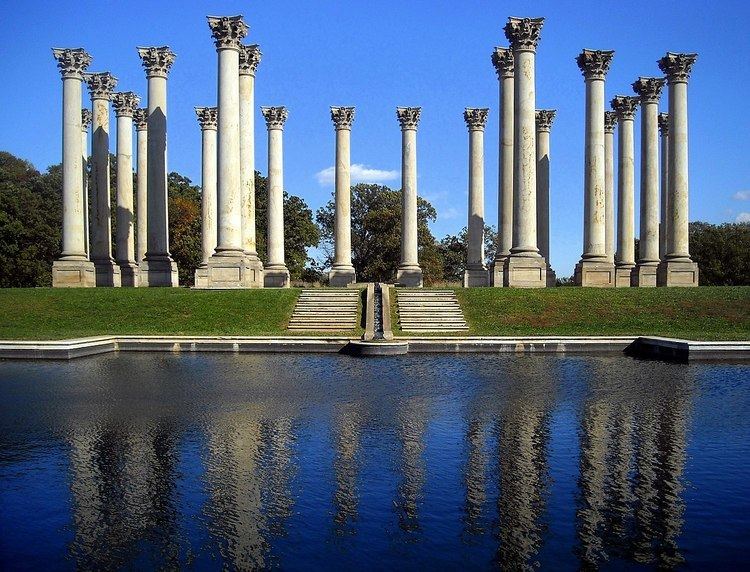NRHP Reference # 73002122 Phone +1 202-245-2726 | Area 167 ha Added to NRHP 11 April 1973 | |
 | ||
Location 24th and R Sts., NE.Washington, D.C. Address 3501 New York Ave NE, Washington, DC 20002, USA Hours Open today · 8AM–5PMSaturday8AM–5PMSunday8AM–5PMMonday8AM–5PMTuesday8AM–5PMWednesday8AM–5PMThursday8AM–5PMFriday8AM–5PMSuggest an edit Similar National Bonsai Foundation, National Capitol Columns, National Building Museum, United States Botanic G, National Museum of Women i | ||
The United States National Arboretum is an arboretum in Washington, D.C., operated by the United States Department of Agriculture's Agricultural Research Service as a division of the Henry A. Wallace Beltsville Agricultural Research Center. It was established in 1927, by an act of Congress after a campaign by USDA Chief Botanist Frederick Vernon Coville.
Contents
It is 446 acres (1.80 km2) in size and is located 2.2 miles (3.5 km) northeast of the Capitol building, with entrances on New York Avenue and R Street, Northeast. The campus's gardens and collections are connected by roadways that are nine miles long in total.
The arboretum functions as a major center of botanical research. It conducts research on trees, flowering plants, shrubs and turf, as well as the development of plants. It has a library with 11,000 volumes and approximately 100 publications concentrating in botanical literature.
Major garden features
Source:
Single-genus groupings
Source:
Bonsai
The collection includes a Japanese White Pine, (Pinus parviflora 'Miyajima') bonsai tree, donated in 1975 by Masaru Yamaki to mark the US bicentenary. This tree was formerly in Hiroshima, and survived the atomic bomb dropped in that city in 1945. The tree has been "in training" since 1625.
Public art
The Arboretum features a small group of public artworks including "Split Ritual" by American sculptor Beverly Pepper. The piece is made of ductile iron and stands at H. 10 ft (3.0 m) x W. 44 in (110 cm) x D. 100 in (250 cm). It consists of four vertical pieces that look like large tools. They are placed in a circle on top of a doughnut shaped flat foundation and each tool is unique. The sculpture was dedicated in 1993 and in the same year was surveyed by the Smithsonian's Save Outdoor Sculpture! program and its condition was declared as well maintained.
